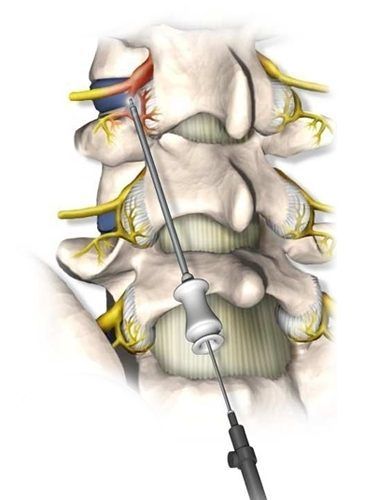Thoracic Medial Branch Radiofrequency Ablation
Thoracic Medial Branch Radiofrequency Ablation (RFA) is a minimally invasive procedure designed to treat chronic mid-back pain caused by conditions like arthritis, facet joint syndrome, or nerve irritation. The procedure works by using heat generated from radiofrequency energy to disrupt the nerve signals that transmit pain from the thoracic facet joints to the brain. These medial branch nerves do not control muscle function or sensation, so disabling them does not affect motor skills or sensory ability but can provide significant pain relief.
This treatment is typically recommended for patients who have experienced temporary pain relief from medial branch nerve blocks, which indicates that the nerves are responsible for their pain.
Thoracic Medial Branch Radiofrequency Ablation can be utilized as a treatment for:
Thoracic Medial Branch Radiofrequency Ablation
Thoracic Medial Branch Radiofrequency Ablation (RFA) works by using radiofrequency energy to generate heat and disrupt the medial branch nerves, which transmit pain signals from the thoracic facet joints to the brain. A thin needle is inserted near the nerves, guided by imaging (fluoroscopy) to ensure precision. Once positioned, the radiofrequency energy is applied to the nerves, effectively “turning off” their ability to send pain signals. This procedure provides long-lasting relief, typically lasting from 6 months to 2 years, and is used to treat chronic mid-back pain
What to Expect for the Treatment?
The Thoracic Medial Branch Radiofrequency Ablation is performed as an outpatient procedure and typically takes about 30-60 minutes. Patients lie face down, and the physician uses fluoroscopy (real-time X-ray) to precisely guide a thin needle to the area where the medial branch nerves are located. A local anesthetic is administered to numb the area, and once the needle is properly positioned, radiofrequency energy is applied to generate heat that disrupts the nerves.
The radiofrequency energy creates a controlled burn that effectively "shuts down" the nerve's ability to transmit pain signals. Because the medial branch nerves do not control muscle movement, this treatment does not affect mobility or sensation.
Post-treatment and recovery
After the procedure, patients may experience mild soreness or swelling at the injection site, but this typically resolves within a few days. Most patients are able to resume normal activities within 24-48 hours, although heavy lifting and strenuous exercise should be avoided for a short period. Full pain relief usually takes about 2-4 weeks to develop as the nerves are gradually disrupted.
The pain relief from RFA can last anywhere from 6 months to 2 years, depending on the individual and their condition. As the nerves regenerate over time, the pain may return, and additional treatments may be necessary.

Interested in our medical services? We’re here to help!
We want to know your needs exactly so that we can provide the perfect solution. Let us know what you want and we’ll do our best to help.
